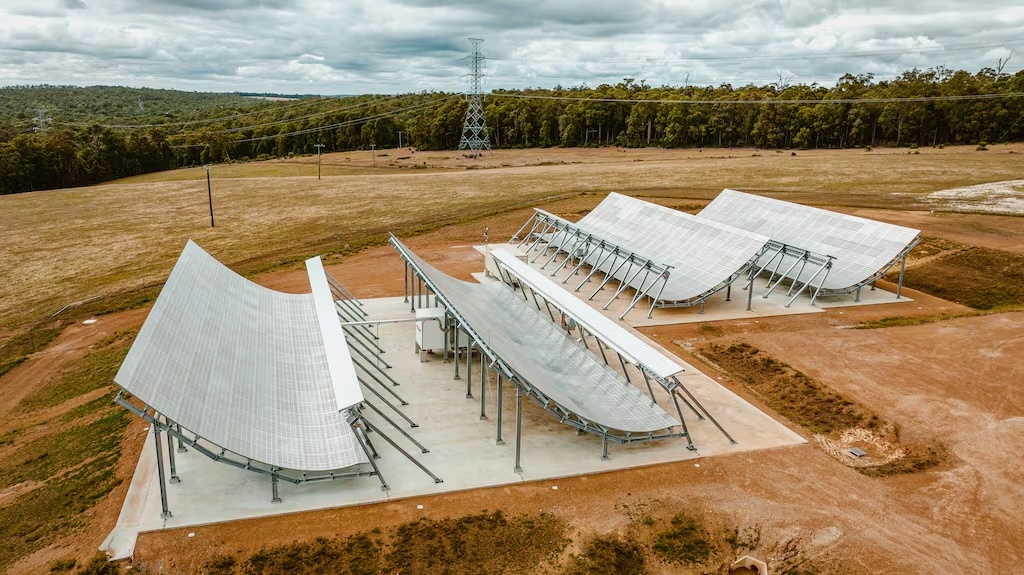27.08.2024

LeoLabs operates six radar sites, including this one in Western Australia, that monitor objects in low Earth orbit. (LeoLabs
When LeoLabs was founded in 2016, its focus was on using a network of ground-based radars to track space debris and satellites. Its customers were commercial companies and civil agencies concerned about safety in orbit.
A lot has changed since then. The number of satellites in low Earth orbit — about 1,200 miles above the planet — grew from less than 1,000 to closer to 9,000. The creation of the Space Force in 2019 and increasing threats from adversaries is driving more demand from military customers in the U.S. and abroad who want more insight into what’s happening in the domain.
LeoLabs CEO Tony Frazier, who joined the company in February after 13 years at Maxar Technologies and its legacy companies, said those shifts have significantly changed the make up of the firm’s customer base, which is now mostly made up of defense clients. In the first half of this year, the company booked a record $20 million in new contracts, the majority of them for military customers.
Frazier recently sat down with Defense News to discuss the company’s evolution, opportunities to support new missions in the Space Force and its international expansion. This interview has been edited for length and clarity.
What opportunities does LeoLabs see to work with the U.S. Defense Department on existing and emerging missions like on-orbit refueling and satellite servicing or dynamic space operations?
I like to think of our company as building a living map of orbital activity, and it should enable dynamic space operations. We have these six radar sites that have 10 active radars where we’re collecting over a million measurements a day of these objects, which tell us where things are and allows us to predict where they’re going.
We really think of what we’re doing as a way to supplement the architecture. The U.S. Space Force is working to build a hybrid space architecture that’s able to take on these various missions. As you know, they released their commercial space integration strategy in April of this year. Space Domain Awareness was one of the mission areas that was called out as a high-risk mission. In order to be able to get the level of persistence that we need across all the orbital regimes, it’s going to take a combination of government sensors as well as other commercial and allied sensors.
One of the things that really distinguishes LeoLabs is that we have strong coverage in the southern hemisphere. We have active radar sites in Western Australia, in New Zealand, and also strong coverage in Costa Rica and the Azores [off the coast of Portugal]. And that fills gaps in coverage that then allow our customers to be able to maintain custody of these important objects.
As LeoLabs’ customer base has expanded, have you explored new approaches for delivering capabilities?
An evolution with my tenure coming into LeoLabs is that we’re open to all business models that make sense for the customer. That could range from the current model — which is company-owned, company-operated where the customers subscribe to a service — to government-owned government-operated, government-owned contractor-operated and everything in between.
One of the contracts you received this year was with the Air Force Research Laboratory. Can you describe the work you’re doing with them?
We actually have two contracts with them. One is for an [Ultra High Frequency] system and the other is for an S-band system. And what that technology will do is it will allow us to be able to extend our capabilities into other orbital regimes as well as do more sophisticated tracking. Things like non-cooperative launch and more aggressive maneuver tracking are all things that matter in that life cycle. That’s certainly aligned with many of the emerging threats that we’re hearing from the U.S. and our allies.
Beyond the U.S., what other countries are you working with?
Our longest standing customer is Japan. And it’s been great to evolve with them as they’ve gotten more sophisticated in their military space command to really provide foundational capability that supports their operational planning, their tracking of high value assets, as well as their ability to monitor other kinds of objects.
What we’ve seen is that there’s an opportunity to kind of replicate that across other regions. We’ve seen a strong pickup across both Asia Pacific as well as in Europe. We’re not in a position to disclose all the customers, but we’ve seen that result in material contract awards. Of the $20 million that we were able to attract in the first half of the year, the largest segment was from international customers.
The use case that we’re seeing is really interesting. As I mentioned, there’s 9,000 active satellites in low Earth orbit today. The bulk of those are commercial. But we now have close to 1,000 satellites that are being flown by China, Russia, Iran and North Korea. So, the real demand signal we’re seeing is that there’s a desire to monitor those objects at very high frequency. And that kind of drives the core service that we provide to those military customers.
The pipeline is very robust. We’re in discussions and evaluations with dozens of countries that have a need for these services.
Quelle: DefenseNews
